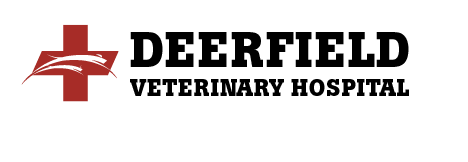Pet Dental Health
Dental care in pets is necessary to provide optimal health and quality of life. Poor dental hygiene leads to diseases of the oral cavity, and if left untreated, are often painful and can contribute to other local or systemic diseases.
Dental care of dogs and cats is one of the most commonly overlooked areas of pet health care. Approximately 80% of all dogs and cats have periodontal disease by the time they are only two years old. Dental disease affects much more than fresh breath. It frequently leads to more serious health problems such as liver, kidney and heart disease. That’s why we’re not just treating dental disease, but taking new steps to prevent it. A major step in this process is encouraging our owners to participate in their pet’s oral health at home.
Periodontal disease in pets is the same as it is in people. It’s a sneaky and insidious process that begins when bacteria in the mouth attach to the teeth and produce a film called “plaque”. When the bacteria die, they are calcified into “calculus” commonly known as tartar which makes a rough surface for even more bacteria to stick to. In the beginning, plaque is soft and can easily be removed by brushing or chewing on appropriate toys or treats. But if left to spread, plaque leads to gum inflammation (called “gingivitis”) and infection. Eventually, the infection spreads to the tooth root and even the jaw bone itself – causing pain and tooth loss.
Examining a dog or cat’s mouth can be compared to opening a Christmas present. Inspecting the outside of the box may give you a hunch about the contents, but until you completely unwrap it, you’ll never really know what’s inside. In the same way peeling away the wrapping paper and packing material brings a present into the light of day, our new dental radiology equipment allows us the opportunity to look beyond the obvious and better examine teeth and their supporting structures below the gum line – exposing hidden, and often undiagnosed, problems.
The American Animal Hospital Association has devised guidelines for veterinarians in order to highlight the need for more professional oral hygiene care for pets. The organization stressed the necessity of going beyond the traditional “scraping the surface” of routine dental cleanings, known as “prophies”. We are encouraged to teach owners the importance of good oral hygiene when puppies and kittens are only a few months old in order to begin a lifetime of healthy benefits.
Research proves that unchecked dental disease can be the root of other problems. In a 2009 study at Purdue’s School of Veterinary Medicine, researchers have discovered significant associations between the severity of periodontal disease and the risk of cardiovascular-related conditions, such as endocarditis and cardiomyopathy.
A recent roundtable discussion between veterinary dental experts shed even more light on the impact that good preventative dentistry plays in a pet’s life. They strongly recommend daily dental care for pets and twice yearly mouth exams beginning when puppies and kittens are two months old. And while that schedule may seem too complicated for some pet owners, dental specialists, veterinary supply companies have developed products that will help pet busy owners put some bite into home dental care for their pets.
A recent development that goes beyond good veterinary and at-home care, is the actual prevention of plaque using a barrier sealant gel. This is applied by the veterinarian and continued at home by the pet owner. Called OraVet®, this system is the first method used by veterinarians to create a physical barrier that reduces bacterial plaque adhesion above and under the gum lines. It is applied at home only once a week after the initial hospital application.



